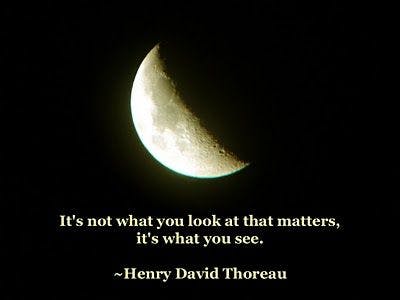Did I fund Organization X?
Jan 21, 2015
Story


Posting this report from Organization X in Zimbabwe and asking my readers, “Would YOU fund this organization?” was about one thing for me:
Assumptions.
We all have them. Yet I find as aid workers and do-gooders, we don’t get nearly enough opportunities to surface them.
The fact that I would have to examine my own assumptions and explain how they’ve transformed over the years has probably been the most difficult part of writing this follow-up.
An early motto at the foundation where I worked when I received this report was, “Give the money and get out of the way.” This was totally unique from my previous experiences with corporate, risk-averse aid agencies and the contractually-bound, short-term projects that made up our “partnerships.”
It was liberating.
Some would call this philanthropic “divining,” or as one commenter said, “a crap shoot.” And coming from the Aidland of 161 Indicators, I really struggled with this at first. What I came to find was that what it truly required was a balance of the science and art of grantmaking.
There’s something intensely exciting to me about getting money to local leaders and organizations that were driven to be there for kids, whether outside funding is available or not. This was embedded between the lines of what Organization X had written on the page. Yes, phrases like “through community participation” and “caregivers worked tirelessly” were promising to me, but there was also something more. It was the subtle tenor of commitment, resourcefulness, and coming together to do something in the midst of dire circumstances rather than just accepting that these children were in trouble.
Absolutely, my technical, over-intellectualized professional self was quick to find the holes—in logic, in planning, in follow-up. I mean, this is what I had been trained to do, intentionally and unconsciously, as an aid worker. One look at the comments on the post demonstrates how adept we are at this.
Find the gaps. Identify solutions. Fix and manage. Do more, more, more. A perpetually half-empty glass.
Anyone can identify what’s wrong. It takes much more effort sometimes to identify what’s right, what’s possible, and where changes can feasibly occur.
Here’s a local group, two hours from the nearest town with any reliable electricity and mobile service, serving a marginalized ethnic minority, reporting on a US$5,000 grant. Now, presumably those who responded with a resounding no might have altered their opinions had they had this information. But does having more information really change what is happening on the ground? Or does more information just make us feel more confident or justified in our own decision-making?
We need smart people to ask relevant questions and identify what works, yes. We also need these same smart people to utilize and develop their skills to meet organizations where they are, rather than trying to form them into versions of ourselves. (See two great recent posts on seeing what IS there and the limits of deduction from Rachel Strohm and Admitting Failure.)
When I read Organization X’s report, I had the opportunity to not just see the “lack of figures” and “lack of clear critical analysis of needs.” I also saw Organization X as a group of concerned individuals responding directly to the needs of vulnerable families in their midst, working hard to mobilize their neighbors to see that children they knew were nurtured and provided with food, shelter, and an education.
One commenter called this charity. But when you’re helping families you know and interact with every day, breaking down barriers of stigma in a community, and demonstrating through your actions that these children deserve more, this is the best of humanity coming through.
And that is what, in the end, I decided to fund.
Of course not everyone will or can fund home-grown, indigenous groups like Organization X. (Though I believe there is a HUGE gap here and more should.) But my own changed assumptions leave me wondering where can we find the freedom to give local people more encouragement, solidarity, and sustenance, which is too often missing in our aid partnerships. What are we missing if we are constrained by our assumptions and beholden to the almighty dollar and its accompanying bureaucratic rigidities? Are we blocked from seeing what has potential if all our attention is on asking for, as one commenter put it, “proof of how they meet each point”?
From what programs are more worthwhile than others, to how numbers or metrics eliminate “haphazard,” “not serious” “flukes” (words used to describe the report by commenters), we will continue to make our assumptions as aid workers. But from what we read on a page, do we assume that the words represent all there is? Or can we give ourselves the chance to recognize that a proposal, a financial report or a site visit may not represent the full extent of an organization’s work?
And what about the fate of Organization X?
The report I shared was received from the group in 2006. A former colleague was finally able to visit the organization last year. She reported that the group had a very strong organizational identity and was led by an inspiring leader, though she’ll be looking out for signs of founder syndrome in the future. They’ve received support from donors to develop their organization’s program monitoring and financial systems, though often staff are going without salaries because of donors’ preference for projects, not operation costs. Their extensive network of now over 800 engaged and active volunteers impressed my colleague so much that she wrote, “This group could mentor others on their approach to working with the community.” She described them as a reflective and adaptive organization, “starting small, programs grown organically, each step realizing greater rights for children.”
So much for not being able to “pass administrative muster.”
This post originally appeared at: http://www.how-matters.org/2011/03/11/did-i-fund-organization-x/
Related Posts
Waiting for Pennies from Heaven
Hillary, Stoves Won’t Save the World
A New Discipline for Development Practitioners




